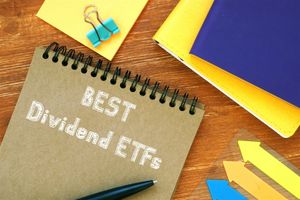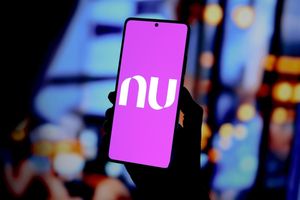
As October 17, 2025, dawns, the global financial markets are witnessing a remarkable phenomenon: an insatiable consumer appetite for physical gold and silver that continues unabated, even as both precious metals scale unprecedented price peaks. This sustained demand is particularly evident in the lead-up to culturally significant events like Dhanteras in India, a day traditionally marked by auspicious purchases of precious metals. The resilience of this demand, defying conventional economic wisdom that dictates a slowdown during high-price environments, signals a profound shift in investor and consumer psychology, driven by a complex interplay of geopolitical uncertainties, inflationary pressures, and deeply ingrained cultural values.
The immediate implications for the precious metals market are clear: a sustained bullish momentum, albeit accompanied by significant volatility due to profit-taking. Analysts are forecasting further price appreciation, with gold potentially nearing $4,500 per ounce and silver eyeing the $70-$75 range. This environment underscores the metals' enduring appeal as safe-haven assets and inflation hedges, prompting a re-evaluation of portfolio strategies and presenting both opportunities and challenges for stakeholders across the financial spectrum.
A Golden Rush: Dhanteras 2025 Ignites Record-Breaking Demand
The lead-up to Dhanteras on October 18, 2025, has underscored a compelling narrative in the precious metals market: a burgeoning consumer and investor demand that defies the gravitational pull of record-high prices. This auspicious Hindu festival, traditionally a cornerstone of gold and silver purchases in India, has become a focal point for understanding the current market dynamics. Consumers, driven by a blend of cultural reverence and investment savvy, are increasingly prioritizing physical gold and silver coins and bars over intricate jewelry, signaling a strategic shift towards wealth preservation and anticipated capital appreciation. Retailers, in turn, are adapting by diversifying their offerings to meet this investment-centric demand, while also promoting lighter-weight designs and exploring digital sales channels.
The trajectory towards these unprecedented price levels has been building over several years, with a significant acceleration in 2025. Gold prices began a robust rally in early 2024, continuously breaking new records. Silver, often dubbed "poor man's gold," has dramatically outperformed, surging approximately 78% year-to-date by mid-October 2025. Key milestones include the U.S. Federal Reserve's dovish pivot in late 2024, signaling potential interest rate cuts in 2025, which reduced the opportunity cost of holding non-yielding assets. By late August and September 2025, as gold surpassed $3,700 and silver broke $44, U.S. retail investors re-entered the market with renewed vigor. By October 17, 2025, spot gold had breached $4,300 per ounce, with MCX Gold December futures hitting an all-time high of ₹1,32,294 per 10 grams. Silver, not to be outdone, reached a 45-year record of $53.60 per ounce. These surges are underpinned by persistent inflation, a weaker U.S. dollar, escalating geopolitical tensions, and robust industrial demand for silver from green energy and electronics sectors.
The ecosystem of stakeholders benefiting from this surge is diverse. Indian consumers remain pivotal, with major jewelers like Tanishq (NSE: TITAN), Kalyan Jewellers (NSE: KALYANKJIL), and Malabar Gold & Diamonds adapting their sales strategies. Global refiners such as Valcambi and PAMP are working to meet the increased demand for physical products. Crucially, central banks worldwide, particularly the BRICS nations, are aggressively accumulating gold to diversify reserves and hedge against global uncertainties, reinforcing gold's strategic importance. Investment funds, including major financial institutions like Goldman Sachs (NYSE: GS) and Bank of America (NYSE: BAC), are increasingly advocating for higher gold allocations in diversified portfolios, moving towards models that include up to 20% in precious metals.
Initial market reactions reflect a profound "risk-off" sentiment, with a broad flight to safety. Investors anticipate continued price appreciation and are re-evaluating precious metals as a core portfolio component. The mining sector is experiencing exceptional profitability due to high selling prices and stable production costs. Bullion dealers and refiners are directly benefiting from increased physical demand. However, industrial users of silver face rising input costs, which could impact profit margins if not passed on to consumers. The collective sentiment points to a sustained bullish outlook for precious metals, solidifying their role as critical assets in an increasingly volatile global economic landscape.
Corporate Fortunes in Flux: Who Wins and Loses in the Precious Metals Boom
The relentless surge in consumer demand for physical gold and silver, particularly accentuated by cultural phenomena like Dhanteras 2025, is redrawing the lines of profitability and market position across various industries. While the precious metals sector itself stands to gain significantly, the ripple effects extend far beyond, creating clear winners and a few notable losers.
The Golden Beneficiaries:
At the forefront of the beneficiaries are Precious Metals Mining Companies. With gold soaring past $4,300 per ounce and silver exceeding $53, miners are experiencing unprecedented profit margins. Their relatively fixed operational costs mean that every dollar increase in commodity prices translates directly into enhanced profitability and robust cash flows. Leading gold miners like Newmont Corporation (NYSE: NEM), Barrick Gold Corporation (NYSE: GOLD), and Agnico Eagle Mines Limited (NYSE: AEM) are poised for exceptional earnings. Similarly, silver-focused miners such as Pan American Silver Corp. (NASDAQ: PAAS), First Majestic Silver Corp. (NYSE: AG), and Fresnillo plc (LSE: FRES) are capitalizing on silver's stellar outperformance driven by both investment and industrial demand. This surge empowers them to invest further in exploration and development, securing future growth.
Precious Metals Streaming and Royalty Companies also stand to gain immensely. Companies like Wheaton Precious Metals Corp. (NYSE: WPM), Franco-Nevada Corporation (NYSE: FNV), and Royal Gold, Inc. (NASDAQ: RGLD) provide upfront financing to miners in exchange for future production at a discount, allowing them to ride the price rally without direct mining risks. Their business model is inherently leveraged to rising commodity prices, translating into significantly enhanced profitability. Furthermore, Bullion Dealers, Refiners, and Precious Metals Storage/Security providers, including major refiners like Johnson Matthey PLC (LSE: JMAT) and security firms like Brink's Company (NYSE: BCO), are witnessing a direct increase in sales volumes and demand for their services. This is particularly true for dedicated bullion dealers who cater to the investment-centric demand for coins and bars, especially during peak buying seasons like Dhanteras.
Precious Metals Exchange-Traded Funds (ETFs) and their managers are also seeing a significant boost. Funds like SPDR Gold Shares (NYSEARCA: GLD), managed by State Street Global Advisors, and iShares Silver Trust (NYSEARCA: SLV), managed by BlackRock (NYSE: BLK), are experiencing massive inflows as investors seek liquid exposure to precious metals. Increased assets under management directly translate to higher fee revenues for these financial giants.
The Challenged and Adapting:
On the other side of the coin, Traditional Jewelry Retailers, particularly in India, face a nuanced challenge. While the overall value of sales might remain stable or even increase due to higher prices, the volume of heavy, traditional gold jewelry sales is likely to decline. Consumers are adapting by purchasing lighter-weight designs, lower karatage gold (e.g., 18-karat or 9-karat), or shifting to studded and diamond jewelry where gemstone value can offset the metal's cost. Companies like Titan Company (NSE: TITAN), Rajesh Exports (NSE: RAJESHEXPO), and PC Jeweller (NSE: PCJEWELLER) are compelled to innovate, focusing on design, craftsmanship, and offering more diverse product portfolios, including silver and diamond options, to maintain market share. Their operational strategies must now prioritize adaptability to evolving consumer preferences and price sensitivity.
Industries heavily reliant on silver as an industrial input are also facing headwinds. Electronics Manufacturers, Solar Panel Producers (e.g., First Solar, Inc. (NASDAQ: FSLR)), and Automotive Companies (especially in Electric Vehicles) use silver as a critical component. The sustained high silver prices significantly increase their production costs. If these companies cannot fully pass on these elevated costs to consumers, their profit margins could be squeezed, potentially impacting their competitive positioning and necessitating strategic adjustments in supply chain management or material sourcing.
Finally, some Silver ETFs/Fund of Funds in the Indian market have faced operational challenges, with several major Indian mutual fund companies suspending fresh investments due to concerns about valuations and difficulties in sourcing physical silver during severe shortages. This highlights potential market fragmentation and investor caution in certain structured products during periods of extreme physical demand and price volatility.
The Dhanteras 2025 phenomenon, therefore, is not just a cultural event but a powerful market catalyst, reshaping corporate strategies and investment flows across the precious metals value chain and beyond.
Beyond the Glitter: Broader Implications for a Volatile World
The sustained consumer demand for physical gold and silver, particularly highlighted by the fervent buying during Dhanteras 2025, transcends mere seasonal retail spikes; it signals a profound recalibration of investor sentiment and a reflection of deeper shifts in the global economic and geopolitical landscape. With gold now above $4,300 per ounce and silver eclipsing $54, these metals are not just commodities but barometers of global unease.
This phenomenon is deeply embedded within several critical broader industry trends. Primarily, it underscores the enduring role of precious metals as inflation hedges and safe havens against economic uncertainty. In October 2025, global financial markets are grappling with persistent inflation, concerns over currency debasement due to ongoing fiscal expansion, burgeoning credit issues, and fears of government shutdowns, particularly in the U.S. This pervasive unease has triggered a pronounced "risk-off" sentiment, driving investors to seek refuge in tangible assets. Secondly, geopolitical shifts are a major catalyst. Escalating tensions, renewed trade conflicts (e.g., US-China friction), and military flashpoints across Eastern Europe and the Middle East are accelerating the "flight to safety." This is further evidenced by central banks globally, including the BRICS nations, accumulating gold at a historic pace, strategically diversifying reserves away from traditional fiat currencies like the U.S. dollar, which itself is weakening due to dovish Federal Reserve policies. This trend signals a potential long-term re-rating of precious metals in global asset allocation strategies and a move towards a more multipolar global financial system. Lastly, silver's rally is particularly robust due to its dual appeal as both a precious metal and a critical industrial commodity. Robust industrial demand from the green energy transition (solar panels, electric vehicles, wind turbines) and high-tech electronics is creating structural supply deficits, amplifying price increases and distinguishing silver from purely monetary metals. The silver market is in its fifth consecutive year of deficit, with 2025 projected to see a shortfall of around 118 million ounces.
The ripple effects of this surge are extensive. While mining companies, refiners, bullion dealers, and ETF providers are experiencing expanded profit margins and robust stock performance, industries heavily reliant on silver as an industrial input, such as electronics manufacturers and solar panel producers, face significantly increased production costs. This could squeeze profit margins, forcing them to innovate in material efficiency or explore alternative materials. The jewelry and luxury goods sector, while benefiting from the perception of increased value, may see a shift away from heavy gold pieces towards lighter designs, silver, or second-hand markets. Even alternative assets, particularly cryptocurrencies marketed as "digital gold," may find their narrative challenged by the tangible and historically proven stability of physical gold and silver during this flight to safety.
From a regulatory and policy standpoint, the sustained rally compels governments and central banks to re-evaluate their monetary and fiscal policies. The accelerated central bank gold buying trend signals a strategic diversification away from traditional reserve currencies. Regulatory bodies might also increase scrutiny of the physical precious metals market, especially given reported shortages and backwardation in silver, to ensure market integrity. In India, while GST reforms aim to boost confidence, a weaker rupee and high import duties can inflate local bullion costs.
Historically, periods of significant economic uncertainty and geopolitical turmoil have consistently driven similar surges in precious metals. The 1970s stagflation and oil crisis saw gold skyrocket from $35 to $850 per ounce by 1980. The 2008 Global Financial Crisis and the COVID-19 pandemic in 2020 also triggered notable rallies as investors sought safe havens amidst systemic risks. The current environment, with its confluence of global conflicts, persistent inflation, unprecedented national debt, and dovish central bank policies, presents a potent cocktail reminiscent of these historical precedents. The "extraordinary velocity" of the current rally, with gold surpassing $4,000 per ounce, indicates a rapid re-rating of precious metals as indispensable assets in an unpredictable world.
The Road Ahead: Navigating a Bullish Precious Metals Landscape
As the precious metals market continues its unprecedented ascent, propelled by a confluence of macroeconomic shifts, escalating geopolitical tensions, and robust consumer and institutional demand, understanding the road ahead becomes paramount for companies and investors alike. With gold above $4,300 per ounce and silver breaking $54, the future outlook for these assets is overwhelmingly bullish, albeit with inherent volatility.
Short-Term and Long-Term Trajectories:
In the short-term (2025-2026), the bullish momentum is expected to persist. Analysts project gold to target $4,400-$4,500 per ounce by year-end 2025, potentially reaching $4,900-$5,000 by 2026. Silver, with its strong industrial tailwinds, is forecast to continue outperforming gold in percentage terms, eyeing $65 to $77 per ounce by 2026-2027. Key drivers will be ongoing global geopolitical uncertainties, a weakening U.S. dollar, anticipated Federal Reserve rate cuts, and sustained central bank accumulation. For the long-term (beyond 2026), the outlook is even more compelling. Gold is widely forecast to continue its ascent, with targets ranging from $5,735 in early 2027 to over $10,382 by 2031, driven by persistent global inflation, de-dollarization trends, and its unwavering safe-haven appeal. Silver is also expected to see significant long-term growth, potentially exceeding $100 per ounce by 2035, underpinned by increasing industrial demand from the green energy transition and technological advancements, coupled with persistent mining supply constraints.
Strategic Pivots for Industry Players:
Companies across the precious metals value chain must adapt strategically. The mining sector, currently enjoying exceptional profitability, needs to prioritize increased exploration and development of new projects to counteract resource depletion. Investing in sustainable mining practices, automation, and decarbonization will also be crucial to meet evolving stakeholder expectations and mitigate geopolitical risks in operating environments. For the refining sector, technological investment in advanced recycling solutions, particularly from e-waste, presents a significant opportunity to secure feedstock and reduce cost volatility. Diversifying supply chains and integrating circular economy principles will be key. The retail sector, especially in India, must continue to pivot from traditional heavy jewelry towards higher-margin, lighter, or branded designs, and significantly embrace digitalization, offering digital gold and other financial instruments to cater to evolving consumer preferences and investment-centric demand. Consumer education on the investment aspects of precious metals will also be vital.
Emerging Opportunities and Challenges:
Significant opportunities lie in central bank diversification away from the U.S. dollar, providing a structural demand base for gold. Growing consumer wealth in emerging economies like India and China will continue to fuel demand for both gold and silver. Moreover, emerging markets are industrial hubs for green energy and electronics, ensuring robust industrial demand for silver. However, challenges include increasing resource nationalism and geopolitical risks impacting mining operations, and affordability constraints from record-high prices potentially slowing traditional physical purchases in price-sensitive markets.
Potential Scenarios for Investors:
Investors face several potential scenarios:
- Continued Bull Market (High Probability): Driven by persistent inflation, geopolitical instability, central bank buying, and dovish monetary policies, gold could exceed $5,000 per ounce by 2026-2027, with silver potentially reaching $75-$100+. Investors should maintain diversified portfolios, considering physical metals, ETFs (e.g., SPDR Gold Shares (NYSEARCA: GLD) and iShares Silver Trust (NYSEARCA: SLV)), or well-managed mining stocks, employing dollar-cost averaging during dips.
- Short-Term Correction/Consolidation (Moderate Probability): Profit-taking, a temporary U.S. dollar strengthening, or an unexpected hawkish monetary shift could lead to a sharp but likely temporary pullback. This scenario would present buying opportunities for long-term holders.
- Silver Outperformance (Specific Opportunity): An intensifying supply deficit coupled with explosive growth in green energy and electronics could drive silver to gain value faster than gold, compressing the gold-to-silver ratio. Strategic investors may increase exposure to silver, recognizing its dual role.
In essence, the precious metals market is poised for continued strength in both the short and long term, underpinned by persistent inflation, geopolitical risks, central bank demand, and burgeoning industrial applications for silver. Companies must adapt with agility, and investors should remain vigilant, embracing diversified, long-term strategies to capitalize on this evolving landscape.
The Golden Horizon: A Reshaped Investment Landscape
The extraordinary surge in consumer demand for physical gold and silver, spectacularly highlighted by the auspicious Dhanteras 2025 period, marks a pivotal moment in financial markets. This rally, defying record-high prices, is not merely a transient phenomenon but a powerful indicator of deeper, structural shifts in the global economic and geopolitical order.
Key Takeaways:
The event underscores several critical points. Firstly, record-breaking prices are now the new normal, with gold breaching $4,300 per ounce globally and silver eclipsing its 1980 all-time record at over $54 per ounce, showcasing phenomenal year-to-date gains. Secondly, demand is dual-driven: fueled by international factors like persistent credit stress, escalating geopolitical tensions, anticipated Federal Reserve rate cuts, and robust central bank gold acquisitions, alongside strong domestic demand in India rooted in cultural significance and increased household liquidity. Thirdly, a significant shift in consumer preference is evident, with buyers increasingly favoring investment-grade coins and bars over traditional jewelry, or opting for lighter, lower-karat pieces to manage affordability. Finally, silver's remarkable outperformance stands out, driven by its dual role as a precious metal and an indispensable industrial commodity in burgeoning sectors like green energy and high-tech electronics, coupled with ongoing supply constraints.
Market Assessment Moving Forward:
The market outlook for precious metals remains overwhelmingly bullish in both the short and long term. Analysts project gold to target $4,400-$4,500 per ounce by year-end 2025, with long-term forecasts reaching $5,000 to even $10,000 by 2030, should current conditions persist. Silver is expected to continue its ascent, potentially reaching $60-$75 per ounce globally by year-end 2025 and possibly exceeding $100 per ounce by 2035. While volatility, particularly short-term profit-taking post-festive buying, is anticipated, the underlying fundamental drivers suggest a sustained upward trajectory.
Significance and Lasting Impact:
This historic rally unequivocally reinforces the enduring role of precious metals as essential components for wealth preservation and portfolio diversification in an increasingly unpredictable global landscape. It signals a profound paradigm shift where investors are actively seeking tangible assets to hedge against persistent inflation, currency debasement, and geopolitical instability. Gold's status as the ultimate safe haven has been powerfully reaffirmed, while silver's growing importance as a critical industrial metal ensures its indispensability in future economic growth and the green transition. The events of 2025 serve as a potent reminder for investors to re-evaluate traditional asset allocations and consider the unique risk-reward profiles that precious metals offer.
What Investors Should Watch For:
In the coming months, investors should diligently monitor key global indicators: the trajectory of global inflation, the Federal Reserve's monetary policy decisions (especially interest rate cuts), and the evolution of geopolitical conflicts. The supply-demand dynamics within the industrial silver market will also be crucial for its continued outperformance. A "buy on dips" strategy is widely recommended, viewing any market pullbacks as opportunities for accumulation. Maintaining a diversified portfolio with judicious allocations to physical precious metals, ETFs (like SPDR Gold Shares (NYSEARCA: GLD) and iShares Silver Trust (NYSEARCA: SLV)), or well-managed mining stocks remains paramount. While short-term volatility is a given, a long-term perspective focused on the fundamental drivers of this rally will be key to navigating this golden horizon.
This content is intended for informational purposes only and is not financial advice





